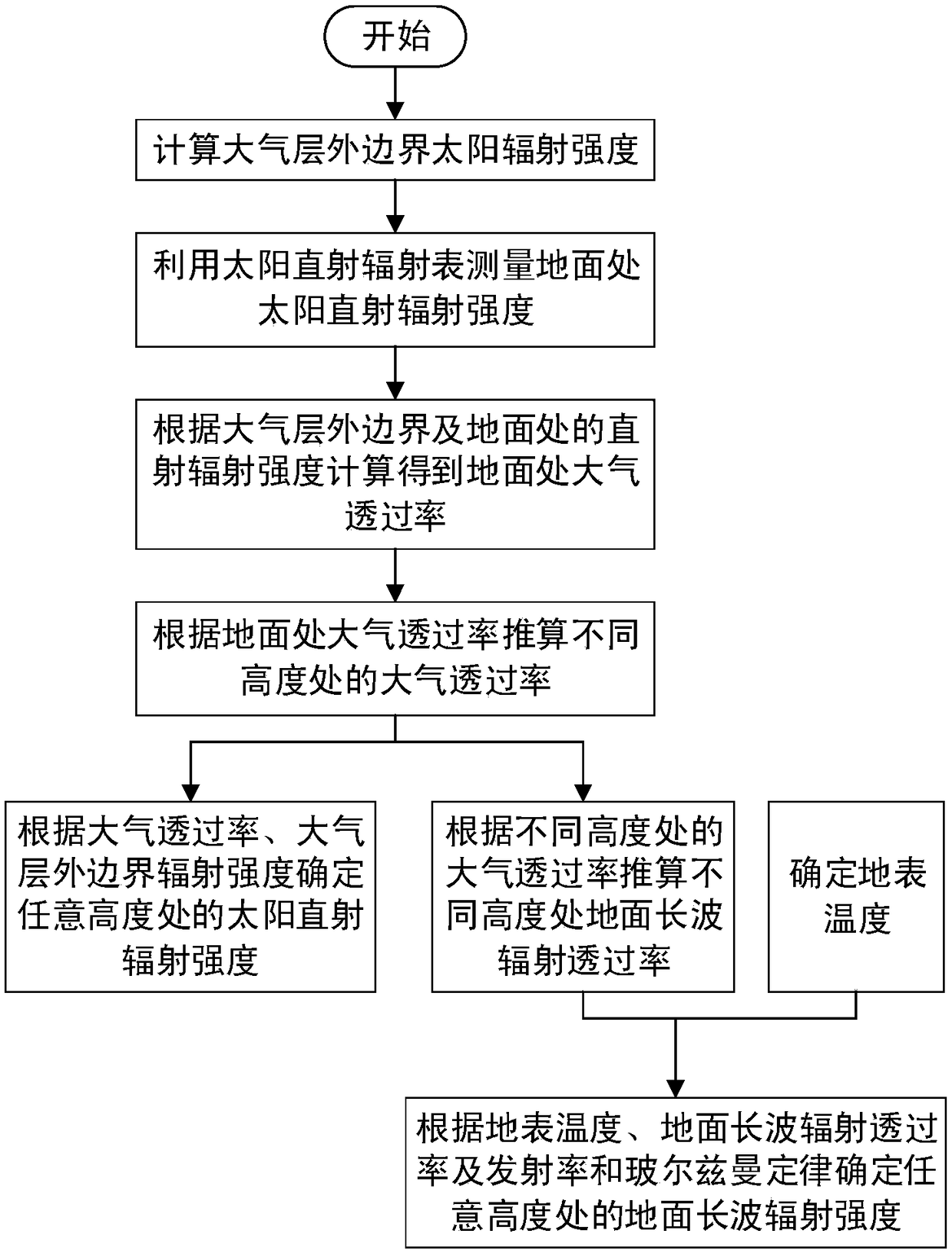A method for estimating radiant thermal environment characteristics of a floating device
A technology of radiant heat and aerostats, which is applied in the directions of instruments, calculations, computer-aided design, etc., can solve the problems of various types of measurement data, difficulty in reflecting the influence of the thermal characteristics of aerostats, and difficulties in areas with limited measurement conditions, etc., to achieve The effect of reducing the error
- Summary
- Abstract
- Description
- Claims
- Application Information
AI Technical Summary
Problems solved by technology
Method used
Image
Examples
Embodiment 1
[0028] A method for estimating the radiant heat environment characteristics of an aerostat, such as figure 1 shown, including the following steps:
[0029] S1, calculate the radiation intensity I of the outer boundary of the atmosphere sun ;
[0030] Determine the Radiation Intensity I of the Outer Boundary of the Atmosphere According to the Day Number n of Different Dates sun , the radiation intensity I of the outer boundary of the atmosphere sun The calculation formula is
[0031] where I 0 Is the solar constant, its value is 1367W / m 2 .
[0032] S2, using the direct solar radiation meter to calculate the direct solar radiation intensity I at the ground d,0 ;
[0033] S3, according to the radiation intensity I of the outer boundary of the atmosphere sun and the direct solar radiation intensity I at the ground d,0 Calculate the atmospheric transmittance τ at the ground atm,0 , τ atm,0 =I d,0 / I sun ;
[0034] S4, according to the atmospheric transmittance τ a...
PUM
 Login to View More
Login to View More Abstract
Description
Claims
Application Information
 Login to View More
Login to View More - R&D
- Intellectual Property
- Life Sciences
- Materials
- Tech Scout
- Unparalleled Data Quality
- Higher Quality Content
- 60% Fewer Hallucinations
Browse by: Latest US Patents, China's latest patents, Technical Efficacy Thesaurus, Application Domain, Technology Topic, Popular Technical Reports.
© 2025 PatSnap. All rights reserved.Legal|Privacy policy|Modern Slavery Act Transparency Statement|Sitemap|About US| Contact US: help@patsnap.com



